Grevillea: description, planting and care

Grevillea (Grevillea) is an evergreen plant from the Proteaceae family. In nature, it can be seen in the form of a shrub or tree. The culture lives in Australia. However, some of the 400 species are found elsewhere, such as New Guinea. Plants differ in appearance, although they all have common features. The tallest shrubs grow up to 1.5 meters. Trees reach 30-35 meters.
Due to its unusual appearance and high decorativeness, the plant is of interest to many flower growers. Therefore, the culture is grown at home. In an apartment, the plant is limited to two meters in height.
Caring for a moody Australian culture is easy. It is only necessary to provide her with the proper living conditions.


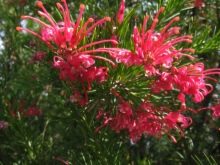
Peculiarities
The culture is distinguished by smooth cylindrical stems of a grayish tint. The leaves are long, feathery, elliptical in shape. The color is deep green. In length, they reach 30 cm, are located on the stems in large numbers. Due to this, the plant resembles a thuja, looks voluminous and attractive. The underside of the leaves is covered with fine pile.
The racemose inflorescences consist of small flowers with long pistils. Their shape is quite unusual. The color of the petals can be white, but usually they are painted in bright colors (deep pink, orange, crimson). It is very difficult to achieve the appearance of flowers when growing a tree in a room.
The plant is demanding on climate conditions. But if all the conditions are met, the culture can please the grower with an elegant flowering look.
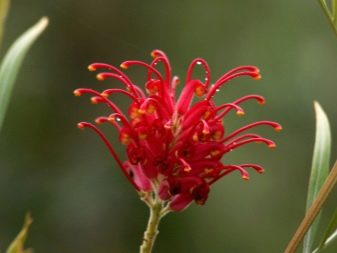

Lighting
It is best to place the plant in a fairly bright area without drafts. It is desirable that he has enough space. Culture loves space and does not tolerate green neighbors close by.
The lighting should be bright. However, it is unacceptable that the direct rays of the sun fall on the flower. This is especially true for the warm period, during which the sun is very active. Diffused light can be achieved with light curtains. Grevillea should be exposed to light for at least 11 hours a day. On cloudy days, you can use additional light sources. Phytolamps are quite suitable.
In warmer months, the tree can be moved outside. It is advisable to put it in a place with soft light. The main thing is to make sure that the culture is not disturbed by strong winds.
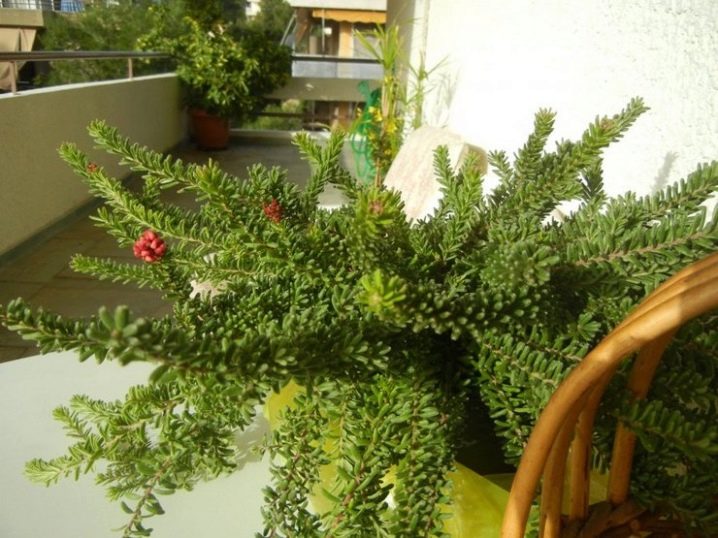
Temperature regime
In spring and summer, the plant feels good at +20.25 degrees Celsius. In the autumn and winter months, cooler conditions should be organized - from +7 to +12 degrees. This is not difficult to achieve - you can move the culture to a glazed balcony.
Air humidity
To create an imitation of the climate of Australian forests for a house tree, you need to provide high humidity. To do this, the plant should be regularly sprayed. You can maintain an optimal humidity level with a household steam generator.
If you neglect this rule, the culture will begin to feel bad, which will be reflected in its appearance. In a room with dry air (especially during the heating period), yellowness will appear on the leaves of the plant. Then the foliage will begin to dry out and fall off.
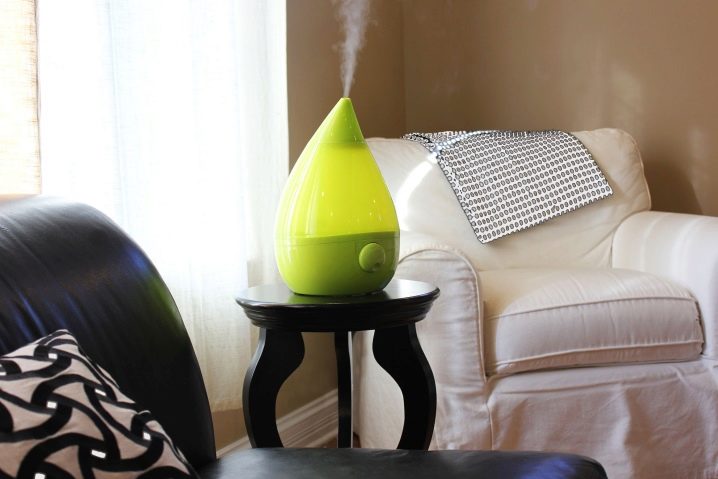
Watering
It is important to water the grevillea on time, avoiding both stagnant moisture and strong drying out of the soil. Regular irrigation of the crop is carried out from March to October.During these months, it is worth making sure that only the top layer of the earth dries out. The rest of the time, the volume of incoming moisture must be reduced. The main thing is that the soil does not dry out completely in winter. For watering, use soft water after settling. Drinking water is also fine. The temperature of the liquid should be at room temperature.
The soil
For the full growth and development of a plant at home, a special soil mixture is needed. You should take coniferous, peat and leafy soil, as well as sand (2: 1: 1: 0.5). Charcoal and brick chips are good additions.
The soil should not be too acidic, nutritious, but light, it should be good for air. When placing a plant in a container, it is important not to forget about the drainage, which is located at the bottom. Expanded clay, pebbles, pieces of polystyrene are suitable. This will prevent the water from stagnating at the roots.
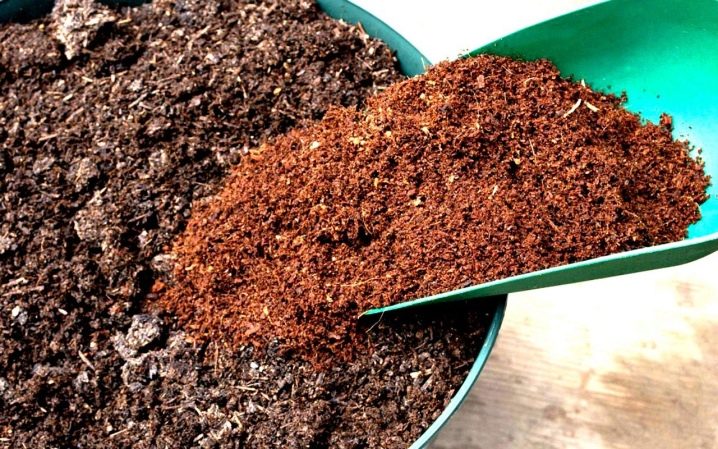
Top dressing
The plant needs additional nutrition during the warmer months. Complex fertilizers designed for indoor crops of this type should be used. They need to be entered every 2 weeks. In winter, soil enrichment with minerals is not required.
Transfer
During the first three years, the procedure should be carried out annually. Then you can transplant the plant after 3-4 years. Mature specimens do not need this procedure. Instead, the top of the ground is changed. The procedure is recommended in early spring. Increase the width of the pot with each transplant. A container with a great depth should not be taken, otherwise the culture will develop slowly.
A drainage layer is laid at the bottom of the container. Then a high-quality soil is placed in the pot (the composition is described above). Grevillea is carefully removed from the old container, shaken off the ground. Rotten roots should be trimmed. In this case, do not forget to treat the cut points with a fungicide. Then the plant is placed in a new container, sprinkled with soil, lightly pressing the earth around the stem.
In conclusion, the culture should be watered and left for 2-3 days for adaptation in a shaded place.
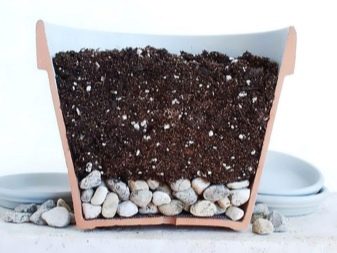
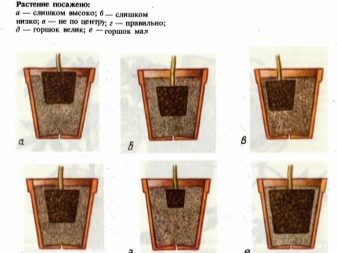
Pruning
Grevillea is growing rapidly. Because of this, it begins to take up a lot of space. To form a neat plant with a beautiful and well-groomed crown, it is required to timely prune the protruding branches. And also, such a procedure will slightly restrain growth, not allowing the tree to stretch too much.
Reproduction
It is possible to propagate Grevillea in several ways.
Seeds
Growing a crop from seeds is a simple process. Fresh seed grows well. During storage, this figure decreases. The situation can be improved by soaking the seed in warm, clean water or in a growth-promoting composition. The procedure is carried out in February.
- An earthen mixture is poured into a small container. This is a composition of leafy, turfy land, humus and sand (1: 0.5: 0.5: 1).
- The seeds are placed at a depth of 0.5 cm and sprayed with a spray bottle.
- The container is covered with polyethylene to create greenhouse conditions. Glass can be used.
- Maintain soft lighting and a temperature of + 18.20 ° C.
- Every day, planting is aired and sprayed as needed.
- When sprouts appear, the covering part is removed.
- After the appearance of several leaves, the seedlings are thinned out (the distance between the plants should be about 2 cm).
As the plants grow, they are planted in separate small pots.


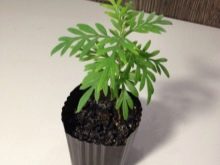
Cuttings
For this method, semi-lignified shoots with a length of about 8 cm are used.The process begins at the end of August. It is desirable to treat the sections with a growth stimulant. Then you should place the cuttings in clean sand. Seedlings are watered, covered with foil or glass containers (for example, jars). Then they are placed in a warm place (at a temperature of + 20 ° C) with soft lighting. Periodically, the seedlings are ventilated.
When the leaves appear, you can plant young plants in separate containers.
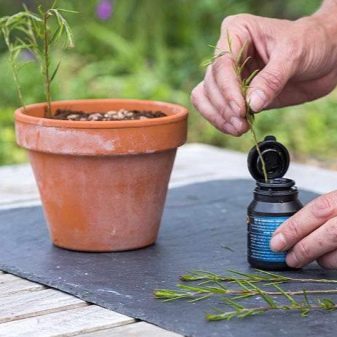
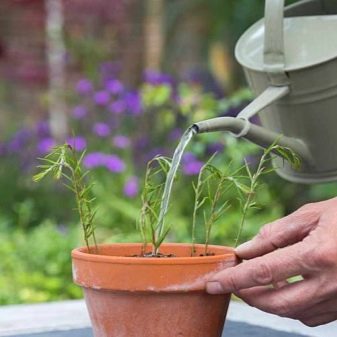
Diseases and pests
The culture is disease resistant. But with the wrong care, problems can begin.When the plants are kept in a warm room, they turn yellow in winter, and sometimes even leaves fall off. With poor watering and dry air, the ends of the leaves begin to dry out. When waterlogged, the roots begin to rot. Therefore, it is important to observe the conditions for keeping the plant and the watering regime, as well as remember about drainage.
If the indoor climate is unsuitable for the plant, spider mites can attack the foliage. If a thin web, yellowing and deformation of the foliage is found, urgent action should be taken. It is necessary to immediately treat the plant with an insecticide and adjust the air humidity. And also do not forget to periodically examine the green "pet".


Outdoor cultivation
The culture is planted in the garden in early autumn. Spring planting is also acceptable, but in this case it is necessary to often water the plant so that it takes root. Sunny areas are preferred, light shade possible. If there is enough rainfall, the crop needs almost no irrigation. During dry periods, it should be moderately moisturized.
There is no need to feed the plant in the garden. The main thing is to provide a small layer of mulch, which will provide the grevillea with all the useful substances. In the south, the culture can winter in the garden, but subject to its shelter. In other regions, plants are moved to pots for the winter and placed in a cool, lighted room, occasionally watering.
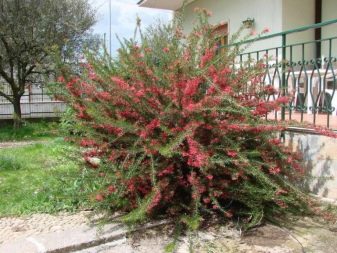
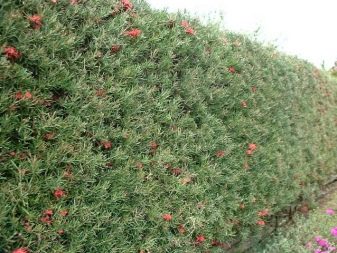
Varieties
Let's consider several varieties of the plant.
- Grevillea banksii. It is a small tree or shrub. The leaves are odd-pinnate, smooth, dark green, with a small fluff on the back. The flowers are deep red, have curved pistils.
- Powerful (Grevillea robusta). Grevillea robusta is a large tree. It is often called silk oak. In nature, this species reaches 15 meters. The culture has large grayish-green leaves with a small downy. The flowers are rich in orange color. The pistils "look" up.
- Rosemary (Grevillea rosmarinifolia). It is a small shrub whose leaves resemble coniferous needles. Beautiful inflorescences include scarlet flowers with white blotches.
- Juniper (Grevillea juniperina). This species looks very similar to a juniper. Numerous flowers are decorated with bright red stamens with yellow anthers. Because of this, the plant looks especially "smart", resembling fireworks against the backdrop of dense green foliage. Sometimes the flowers are yellow or orange.
- Candelabra (Grevillea candelabroides). It is a rather attractive lush bush. The leaves are pinnate. The flowers are snow-white. Large fluffy inflorescences are cylindrical in shape.

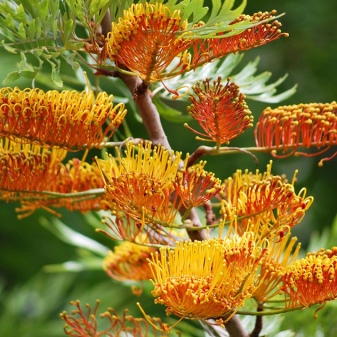
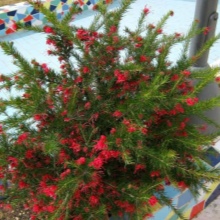

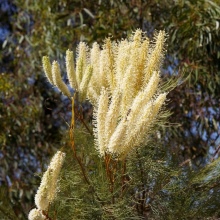
For an interesting video about the germination of Grevillea seeds, see below.























The comment was sent successfully.